 Image search results - "koen" Image search results - "koen" |

My video of 2023 Koenji Awa Odori. 第64回高円寺阿波おどり
|
|

My video of 2018 Koenji Awa Odori 第62回高円寺阿波おどり
|
|

My video of 2017 Koenji Awa Odori (56 troupes) 第61回高円寺阿波おどり
|
|

My video of 2016 Koenji Awa Odori (56 troupes) 第60回高円寺阿波おどり 56連の総集編
|
|

My video of Koenji Awa Odori 2015 第59回高円寺阿波おどり 40連の総集編
|
|

My video of Koenji Awa Odori 2013 Part 1/3 第57回 東京高円寺阿波おどり 総集編
|
|

My video of Koenji Awa Odori 2013 Part 2/3 第57回 東京高円寺阿波おどり 総集編
|
|

My video of Koenji Awa Odori 2013 Part 3/3 第57回 東京高円寺阿波おどり 総集編
|
|

My video of Koenji Awa Odori 2011 Part 1/2 高円寺阿波おどり
|
|

My video of Koenji Awa Odori 2011 Part 2/2 高円寺阿波おどり
|
|

My video of Koenji Awa Odori 2009 Part 1/3 - Kokesaku 苔作
|
|

My video of Koenji Awa Odori 2009 Part 2/3 - Kikusui-ren 菊水会菊水連
|
|

My video of Koenji Awa Odori 2009 Part 3/3 - Asuka-ren 飛鳥連
|
|
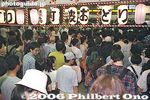
Crowd at JR Koenji Station on Awa Odori night.The Koenji Awa Odori is basically a parade of dancers. Many groups of dancers from various parts of Japan participate in the parade that follows the main shopping streets near Koenji Station on the Japan Railways Chuo Line in Tokyo.
|
|

Monorail to Chiba Koen Station 千葉公園駅
|
|

Each dance troupe starts with a lantern bearer showing the name of the troupe.The dance is quite simple. While bobbing up and down, the dancer holds her hands above the head and shakes the fingers. This hand gesture indicates that the person has gone crazy. It is therefore nicknamed the "fool's dance." The dance is held on the last weekend in August.
|
|

View of Chiba Park from monorail. 綿打池
|
|
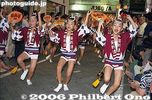
The troupe can consist of children (as young as age 2 or 3), women, and men.The Awa Odori originated 400 years ago in Tokushima Prefecture (in Shikoku) where it is one of Japan's most famous festivals. Although it is not as large as the one in Tokushima, the Koenji Awa Odori in Tokyo has become a major summer festival in Tokyo.
|
|

Chiba Park approach
|
|

The Koenji Awa Odori has become a major summer festival in Tokyo. It had a humble beginning in 1957 when it was originally called the Koenji Baka Odori. "Baka" means fool.
|
|
|
|

One trademark of the dancers is the crescent-shaped straw hats.
|
|

White weeping cherry blossoms
|
|

The men look more like the "fools."
|
|

White weeping cherry blossoms
|
|
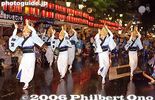
The parade route centers on JR Koenji Station. There are wide and narrow portions of the route.If it rains, they may stop the festival early.
|
|

Pink weeping cherry blossoms
|
|

It is most crowded along the large avenues. The crowd is several rows deep. Those in the front are expected to sit down.
|
|
|
|

The dancers hop on one leg.So what is Tokushima's Awa Odori doing in Koenji, Tokyo? It was first organized by a youth group of Koenji's retail merchants in 1957. They wanted to hold an event to attract more shoppers to the area. Neighboring town Asagaya had already started the Tanabata Festival in 1954. The Tanabata Matsuri, of course, is from up north in Sendai, Miyagi Pref. So the Koenji folks decided to transplant a southern festival to Koenji. That was the Awa Odori.
|
|
|

The first Koenji Awa Odori in 1957 had only 57 dancers and about 2,000 spectators. Iroha-ren いろは連There are now about 30 to 40 Awa Odori parades held in Tokyo alone, usually in shopping areas. The one in Koenji is the largest in Tokyo.
|
|
|
|

These days, they have 10,000 dancers from 70 dance groups and over 1 million spectators. Also see the video at YouTube.いろは連
|
|
|

Each dance troupe is called a "ren." This is the Suiko-ren. 吹鼓連
|
|
|
|

The dance troupe typically has subgroups of children, women, men, and musicians. Suiko-ren 吹鼓連吹鼓連
|
|
|

The dancers wear a light kimono and half-moon straw hats.
|
|

White and pink weeping cherry blossoms
|
|

Musicians always bring up the rear of the dance troupe. Taiko drums, flutes, and shamisen. The Awa Odori has a distinct rhythm and beat. It really makes you want to get up and dance.
|
|

About 30 weeping cherry trees ring the pond's perimeter.
|
|

The dancers also let out a yell as they dance. Hana-no-ki-ren 花の木連
|
|

Chiba Park
|
|

Other dancers might also wear a simpler outfit of short pants and happi coat. Swinging around a fan is also common.花の木連
|
|
|

These pictures show over 40 dance troupes which I photographed in 2004 and 2005. Budo-ren 富道連富道連
|
|
|
|

Budo-ren 富道連富道連
|
|
|

Shakujii-Koen Station on the Seibu Ikebukuro Line. 石神井公園駅
|
|

Koku-Koen Station on the Seibu Shinjuku Line 航空公園駅
|
|

The dance troupes come from in and out of town. A few from Tokushima as well as Kanagawa, Chiba, Shizuoka, and other prefectures. Edokko-ren 江戸っ子連
|
|
|

Road to Shakujii Park.
|
|

In front of Koku-Koen Station. Notice the paper plane sculpture and YS-11 prop plane.
|
|

Tokushima and Tokyo have the most number of Awa Odori troupes with 40 to 50 each.Edokko-ren 江戸っ子連
|
|

Most of the weeping cherries are planted along the pond's edge.
|
|

One end of Shakujii Park.
|
|

Paper plane sculpture
|
|

Edokko-ren 江戸っ子連
|
|

Chiba Park weeping cherries
|
|

Shakujii Pond 石神井池
|
|

Another sculpture in the Aviation Memorial Park.
|
|

Kokesaku-ren 苔作連
|
|

Boats for rent
|
|

Swan boats on Shakujii Pond. 石神井公園
|
|

Air Nippon YS-11 propeller plane. Donated by All Nippon Airways in 1997.
|
|

Kokesaku-ren 苔作連
|
|
|
|

YS-11 propeller plane. Open to the public on certain days of the year.
|
|

Kimagu-ren きまぐ連
|
|
|
|

Front of YS-11 propeller plane.
|
|

Kimagu-ren きまぐ連
|
|
|

Shakujii Pond 石神井池
|
|

Propeller
|
|

美遊ひよこ連
|
|
|
|

Part of the original runway at the Tokorozawa Aviation Memorial Park. 所沢航空記念公園
|
|

美遊ひよこ連
|
|
|
|

Tokorozawa Aviation Memorial Park. 所沢航空記念公園
|
|

美遊ひよこ連
|
|
|
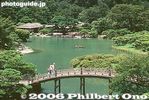
Engetsukyo Bridge, symbol of Ritsurin Park. 栗林公園 偃月橋
|
|
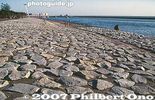
Kasai Rinkai Park waterfront
|
|
|

Tokorozawa Aviation Museum. The building on the left is an IMAX theater, and the larger structure on the right is modeled after a blimp on the inside to show retired planes and helicopters. Looks like jet turbine too. 所沢航空発祥記念館
|
|

美遊ひよこ連
|
|
|
|
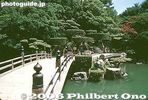
Crossing the bridge
|
|
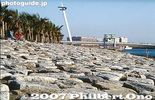
Kasai Rinkai Park waterfront
|
|

What is this?
|
|

In front of Tokorozawa Aviation Museum is a Curtiss-Wright C-46 transport plane.
|
|

Bikkuri-ren びっくり連
|
|
|

North Pond
|
|

Kasai Rinkai Park waterfront
|
|

An egret stalking insects. It did not mind us photographers only meters away.
|
|

The C-46 was used by the Japan Air Self-Defense Forces for cargo transport from the 1950s.
|
|

Midori-ren 美踊連
|
|

Chiba Park
|
|
|

The only egret which never flew away when I approached.
|
|

Monument for Japan's Birth of Aviation 日本の航空発祥の地・所沢
|
|
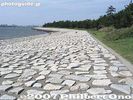
Kasai Rinkai Park waterfront
|
|

Midori-ren 美踊連
|
|
|
|

Notice the black legs and yellow feet.
|
|

Monument for Japan's Birth of Aviation 日本の航空発祥の地・所沢
|
|

Bridge to swimming beaches at Kasai Kaihin Park.
|
|

Midori-ren 美踊連
|
|

Monorail track
|
|

Trail to the other end of the park.
|
|

Back of Monument for Japan's Birth of Aviation日本の航空発祥の地・所沢
|
|

Kasai Rinkai Park waterfront. 葛西臨海公園
|
|

F.I.A.-ren えふあいえい連
|
|
|
|
|

F.I.A.-ren えふあいえい連
|
|
|

Kasai Kaihin Park beach. It's not Hawaii, but better than nothing. 葛西海浜公園
|
|

Inside the Tokorozawa Aviation Museum. You are greeted by a replica of Kai-1, Japan's first military plane developed, produced, and flown at Tokorozawa on April 5, 1911. It flew 10 meters high and 800 meters long for 80 sec. 会式一号機
|
|

Sometimes you see a gaijin participant. F.I.A.-ren えふあいえい連
|
|
|

Baby stingray (dead) beached.
|
|

Other more modern planes and helicopters are on display in the main exhibition hall. This is a North American T6G.
|
|

Mitaka-ren みたか連
|
|
|
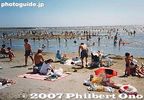
Swimmers in summer at Kasai Kaihin Park, one of the few places in Tokyo where you can enjoy an ocean beach.
|
|

Sikorsky H-19
|
|

Mitaka-ren みたか連
|
|
|
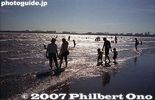
Kasai Kaihin Park beach
|
|

Japan Air Self-Defense Force helicopter.
|
|

Mitaka-ren みたか連
|
|
|

Inside helicopter
|
|
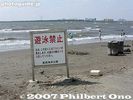
No swimming sign
|
|

Kikusui-ren 菊水会菊水連
|
|

Arakiyama hill 荒木山A low hill is next to the pond. Some cherry trees are also on this hill.
|
|
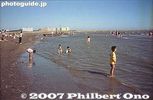
Kasai Kaihin Park beach. In the distance are Tokyo Disneyland hotels.
|
|

Helicopter cockpit with glass bottom.
|
|

Kikusui-ren 菊水会菊水連
|
|

Arakiyama hill 荒木山
|
|

In the murky waters.
|
|
|

Kikusui-ren 菊水会菊水連
|
|

Photogenic weeping cherry シダレザクラ
|
|

Above is a Piper L-21, below is Fuji T-1B.
|
|

Kikusui-ren 菊水会菊水連
|
|
|
|
|

きたまちじゃじゃ馬連
|
|

Weeping cherry tree is "shidare-zakura" in Japanese.
|
|
|
|

きたまちじゃじゃ馬連
|
|

"Shidare" actually means "drooping."
|
|

Remains of a Nieuport 81E2.
|
|

Many of the troupe names have pretty meanings such as Maicho-ren which means "Dancing Butterfly." 舞蝶連
|
|

Monument for the Ohga Lotus, a 2,000-year-old lotus flower species discovered in Chiba by the late Dr. Ohga in 1951. 大賀ハス
|
|

Replica of Nieuport 81E2. This was first imported to Japan in 1918 and used to train Japanese pilots by a French mission.
|
|

Maicho-ren 舞蝶連
|
|

Lotus Pavilion, the Ohga Lotus blooms around this pavilion during June and July. 蓮華亭
|
|

Model of Japan's first motorized flight.
|
|

Maicho-ren 舞蝶連
|
|

Inside Lotus Pavilion, pictures of the Ohga Lotus is displayed. 蓮華亭
|
|

Turbine engines
|
|

Maicho-ren 舞蝶連
|
|

Pond path
|
|

Flight simulator (Not as good as Microsoft Flight Simulator.)
|
|

Maicho-ren 舞蝶連
|
|

綿打池
|
|

My video of Maicho-ren at 2023 Koenji Awa Odori on Aug. 26, 2023.
|
|

Control tower equipment.
|
|

Goraku-ren 伍楽連
|
|

綿打池
|
|

Very impressive and educational aviation museum. Great for kids too.
|
|

Goraku-ren 伍楽連
|
|

Chiba Koen Station 千葉公園駅
|
|

Boeing 747 flight simulator (Not as good as Microsoft Flight Simulator.)
|
|

A few troupes are company-sponsored and take on the company's name like this one, a construction company.There is even the Microsoft-ren. (Not pictured here.)
|
|

Chiba Koen Station monorail platform 千葉公園駅
|
|

Exhibits on Tokorozawa's aviation history.
|
|

Sharaku-ren 写楽連
|
|

Chiba Koen Station monorail
|
|

Pilots who flew at Tokorozawa.
|
|

Sharaku-ren 写楽連
|
|
|

Sharaku-ren 写楽連
|
|

Pilot's goggles and cap.
|
|

Sharaku-ren 写楽連
|
|

My video of Sharaku-ren 写楽連 at 2023 Koenji Awa Odori on Aug. 26, 2023.
|
|

Bust of General J.P. Faure, a Frenchman who trained Japanese pilots in 1919.
|
|

Aoi Shin-ren 葵新連
|
|

There is a walking path around the entire park with two ponds.
|
|

Bust of General J.P. Faure
|
|

Aoi Shin-ren 葵新連
|
|

Sanpoji Pond 三宝寺池
|
|

Statue of Japanese aircraft mechanics who worked at Tokorozawa. This is where the aircraft maintenance hangar was.
|
|

Aoi Shin-ren 葵新連
|
|

Shrine
|
|
|

Aoi Shin-ren 葵新連
|
|

Shrine
|
|

Aoi Shin-ren 葵新連
|
|

Ukimido Pavilion good for feeding ducks.
|
|

The Aoi Shin-ren is from Koenji and one of the largest Awa Odori troupes. They are great performers and one of my favorites.
|
|

Map of park. The park is a long, elongated shape.
|
|

Aoi Shin-ren 葵新連
|
|

Shakujii-Koen Station, North Entrance
|
|
|
|

Koenji Awa Odori, Aoi Shin-ren 葵新連
|
|

Aoi Shin-ren 葵新連
|
|

Koenji Awa Odori, Aoi Shin-ren 葵新連
|
|
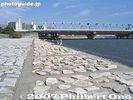
Edogawa River mouth next to Kasai Rinkai Park
|
|

Aoi Shin-ren 葵新連
|
|
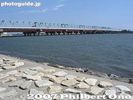
Edogawa River mouth next to Kasai Rinkai Park
|
|

Aoi Shin-ren 葵新連
|
|
|
|

Aoi Shin-ren 葵新連
|
|
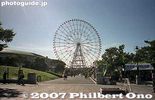
Kasai Rinkai Park ferris wheel
|
|
|

Kasai Rinkai Park ferris wheel. Distorted by wide-angle lens. (It does not lean like that.)
|
|

Ageo Koiki-ren (from Saitama) あげお小粋連
|
|

View of Kasai Rinkai Park from ferris wheel.
|
|

Musashi Minami-ren むさし南連
|
|
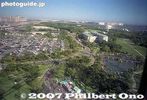
View of Kasai Rinkai Park from ferris wheel.
|
|

Musashi Minami-ren むさし南連
|
|
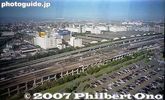
View of Kasai Rinkai Park from ferris wheel.
|
|

Musashi Minami-ren むさし南連
|
|
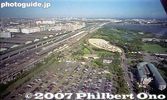
View of Kasai Rinkai Park from ferris wheel.
|
|

Musashi Minami-ren むさし南連
|
|
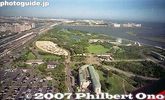
Don't ride the ferris wheel if you're afraid of heights. It is very high and the wind blows through.
|
|

Silver-ren 志留波阿連
|
|
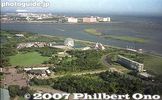
View of Kasai Rinkai Park from ferris wheel. Disneyland in the distance.
|
|

Silver-ren 志留波阿連
|
|
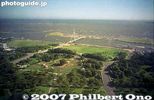
The spacious park is an oasis. Lots of greenery, a beach, bicycling roads, birdwatching stations, and an aquarium.
|
|

Silver-ren 志留波阿連
|
|

View of Kasai Kaihin Park
|
|

Yurikamome-ren ゆりかもめ連
|
|
|

Suzaku-ren 朱雀連
|
|
| 1266 files on 6 page(s) |
1 |
 |
 |
 |
|